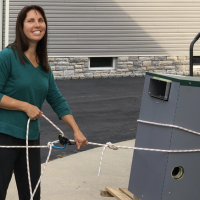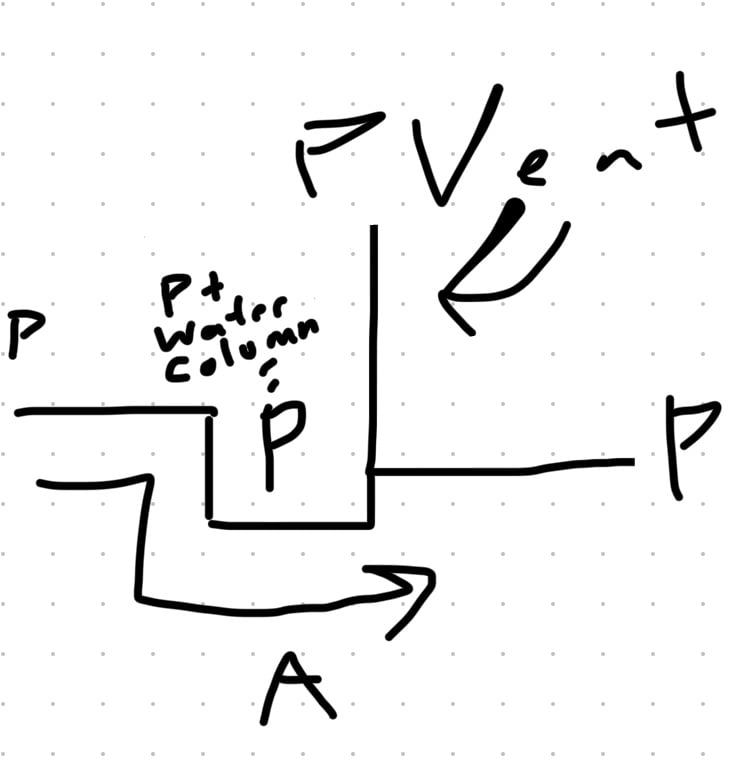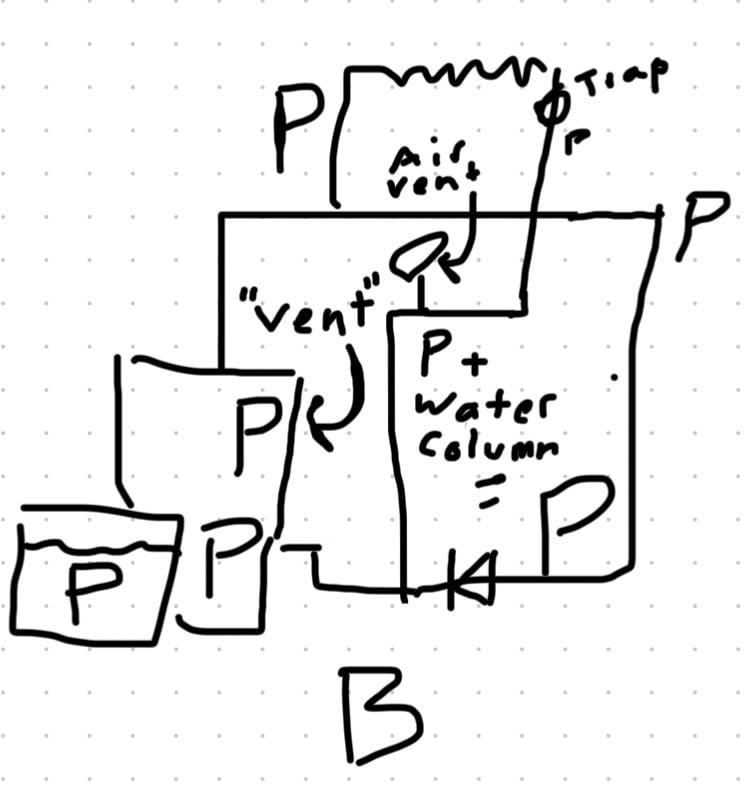Best Of
Re: Single Riser BUT no equilizer?! one Pipe Steam: gravity return
I don't know but someone should be shot for jamming the boiler in there with the controls up against the wall. Makes it difficult to maintain.
Just replace 2-3 sections if they are bad and re- gasket where it is leaking and move on. Make sure the controls work and fix any leaks and fix the venting.
Then in 2-3 years you may have more leaks
Re: Single Riser BUT no equilizer?! one Pipe Steam: gravity return
On a 1 pipe system, the equalizer does not affect the operation of the system relating to pressure. There is no actual "equalization" function it performs.
It makes an excellent drain from the header for any condensate or carryover that makes it to the header. But if carryover occurs, it's going to go all the way to the mains, and that's not great. Water can get pushed all the way to your radiator vents and your main vent.
A boiler can run just fine without it, but there's no reason not to have one. It helps.
Re: 1915 House with Weil-McLain 62, waterlogged tank? (rads cold on 3rd floor)
They even gave you a handy drain valve. Which, once you have opened it, will leak when you try to close it, so get a cap for it and use that (should be the same as the cap for a garden hose bibb).
Then it's easy. Close the valve from the system to the big tank. Open the drain valve. It will glug and gurgle and release a pretty fair amount of water, at a guess. Be patient. You want ALL thew water out of it, and since that drain is all you have it's going to take patience.
Once you are reasonably sure it's really truly empty, close the drain and open the valve to the rest of the system. Then go and bring the pressure up to where you want it — around 18 psig cold should work.
You may have to repeat the bleed process on the radiators… sorry about that.
Re: 1915 House with Weil-McLain 62, waterlogged tank? (rads cold on 3rd floor)
The 'square thing in the corner" might be a way to let air in- let's have a close-up. Also, where are you located?
Re: 1915 House with Weil-McLain 62, waterlogged tank? (rads cold on 3rd floor)
I would pump the pressure up slightly by adding water to the boiler. You are about 12psi now. Get that to 15 psi. If you get some pressure out of the third-floor vent you have enough water pressure. If no pressure try 18psi. This dependent on building height and only building height. Check this with boiler and pump s are off.
Don't mess with the expansion tank yet. If the boiler relief valve is not dumping water the ex tank is ok most likely.
Bleed the 3rd floor and report back.
Re: Let me try this again, this time with a 1" supply pipe. Surely that will cause trouble!
Diagram A
Assuming there is small p pressure on the very left side, an application that this would involve would be an air handler that has negative pressure, there would need to be a vent on the lower pipe so that water could push its way out. The water column, about 3in, combined with that small pressure gives us enough pressure to push its way out. If the air vent were not there, the water could not push its way out effectively because there is a lower pressure on the very left side and higher pressure on the right side. The air vent essentially disables the lower pressure by introducing atmospheric pressure thus equalizing at the air vent and the right side outlet. Take a straw, fill with water, play with the water level because it’s fun to see how it works, put finger over top hole and tilt the straw enough so water drains out. You will see it drain slow, but it drains because there is still some pressure sneaking in. Now do the same thing but without putting your finger over the top hole. You will see the water fall out really quick.
Diagram B
I want to start by saying most residential systems I work on do not have a big enough B dimension to achieve what I think you, Paul, are trying to get at with saying the equalizer does nothing. I do think that if there was a high enough B dimension and a properly placed air vent above the B dimension, that hopefully never sees steam and causes a horrible siphon, that one could achieve a two pipe system without an equalizer. This of course would mean everything is working properly and set up correctly to do so. But even if you did get it working, I think the water would drain really slow if at all (please correct me if I am wrong in thinking this). Water falling creates a vacuum, which is why the air vent would break that vacuum, but you would need a big vent and one that is functioning. Relying on a vent is scary as they can fail. I can easily rely on an equalizer as I don’t have to worry it would stop working on me. This is what the equalizer does, it breaks the vacuum. This is what the vent does on a p trap, it breaks the vacuum. If you’ve ever worked on a p trap, like the one I described above, you could plug the vent and watch the trap not work anymore. You need vents on your house plumbing or things wouldn’t work correctly and your house would smell like crap. Fun fact, the guy who improved the p trap design is named Thomas Crapper. Just like you Paul, I would love to see a test of a two pipe system without an equalizer to end this debate. From my experience, I don’t think it will work the way you want it to. I’ll do what people smarter than me do, install equalizers because they work.
Re: An interesting holiday call.
Whats the rating on the f&t traps in terms of capacity? also, whats the rated pressure difference on the F&T traps. Maybe they needed to go to a zero back pressure condensate return tank inorder to operate properly. If you do pull out the F&T traps and make a wet gravity return you will have to pipe in, PROPERLY, airvents in lue of the F&T traps coming off the top of the mains 12 inches back from the ends of the mains. I would replace all traps if aged out and the young ones I would test all the F&t traps for proper flow and operation. I would fix or replace the condensate tank and when replacing the boiler include in the bid for high pressure flushing of all the piping you can get to so that crude isnt going to cause you warranty issues. Then get it in writting to have you do regular maintenance, water quality, ph, and skimming or the warranty is voided
Re: Something Just Doesn't sound right about this
Hi, One more possible approach is to remove the insulation, then evenly heat the fitting around the plug. You might get it to expand enough so the plug will finally come loose… with the right wrench of course 😎
Yours, Larry
Re: Something Just Doesn't sound right about this
has that insulation been tested for asbestos?
 pecmsg
pecmsg
Re: Something Just Doesn't sound right about this
I wouldn't even try a wrench on that, it's been there too long and looks happy where it is. I would cut off the square drill a hole large enough to fit a sawzall blade and cut out a pie piece. Break the rest. Don't cut too deep.
 Grallert
Grallert




